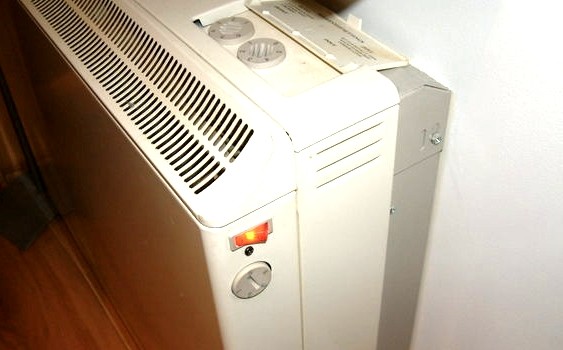
[Update: As nuclear and coal stations are wound down in the UK, this could mean the death of the Economy 7 tariff. This would mean storage heaters becoming more expensive to run, and as such we no longer recommend people install new storage heaters. Read our latest advice here under ‘The future of storage heaters’.]
Economy 7 and storage heaters
To make the most of a storage heater, you need to be on an Economy 7 tariff. Unfortunately, a lot of people don’t know how to best utilise this and end up charging their heaters at the wrong time.
The easiest way to understand storage heaters is to visualise them as a big rechargeable battery; they require charging prior to discharging the energy contained within them. With Economy 7 tariffs, the electricity is supplied to your home at two rates: expensive ‘peak-time’ electricity and cheap ‘off-peak’ electricity. The cheapest way to ‘recharge’ the storage heater would be to do so using the cheap ‘off-peak’ electricity, but it just so happens that this is only available during the middle of the night – usually from 12 until 7 in the morning.
If you charge the storage heater during the middle of the day then you will be charged the peak rate and this quickly becomes a very expensive way to heat the home.
Will storage heaters leak heat?
Unlike a battery that will retain a lot of its charge until required, the storage heater will begin to leak heat almost immediately. Obviously the longer the storage heater can retain the heat, the more useful it is, and therefore companies will make you pay more for these products.
As a rule of thumb though, a storage heater will lose the majority of its stored heat over a 12 hour period. This means that if you get in from work at 7pm, the majority of useful heat will already have dissipated into the home – so the storage heater will not provide you with the temperature uplift you would expect from a traditional heating system.
Obviously this can be mitigated to a certain extent by having a really well insulated house, since the heat can’t escape the property. However any solid brick or uninsulated cavity wall home is going to struggle.
How to set up your storage heater controls
Most storage heaters have 2 key controls:
- Power switches – this determines whether you are using off-peak on peak electricity to charge the storage heater (remember off-peak is considerably cheaper!)
- Input and output controls – the input control determines how much electricity the storage heater will use to charge (and therefore the amount of available heat once the storage heater is charged). The output control controls the rate at which the storage heater emits heat into the room.
In terms of running the storage heaters in the most effective (and cheapest) manner possible, the first thing to ensure is that you don’t use the peak electricity power switch unless absolutely necessary – obviously you don’t want to get cold, but try to avoid using this unless in the middle of the winter when you need a heating boost. The idea is to make sure the storage heater only charges during off-peak hours.

Obviously turning the output control right up will mean that the storage heater does all its heating very early in the morning, so not ideal if you want to be warm in the evenings. If you do get a new storage heater it should retain the heat until mid/late afternoon – it is then that you should turn up the output, so the house warms for when you get home.
Make sure you turn the output to zero when you are not at home or when you go to bed – there is no point releasing the heat as the storage heater charges, since this means that it won’t have any ‘charge’ for when you need it – instead, it will function more as an electric radiator.
Solar PV and Storage Heaters
Some people ask if it is worth running their storage heaters from electricity generated by solar PV. The answer to this is actually not as straightforward as you would think.
Firstly, you generally use more heating during the winter, at a time when your panels are not producing as much electricity as in the summer. Storage heaters require a lot of electricity, and if you had them on all day during the winter, rather than at night, the additional peak rate grid electricity you would need to supplement the solar panels would be prohibitive, unless you had a really big 10kW+ system (40 panels).
Solar PV Optimisers and Storage Heaters
Having said that, there are ways you can make solar and storage heaters work for you. Technology like the Apollo Gem or the Optimmersion work by utilising all the leftover unused energy generated by your solar system that would otherwise go back to the grid.
Typically this is used to heat your water, but there is no reason why you cannot connect this up to your storage heaters. It won’t be enough to meet all your heating needs, and you will still need a charging cycle at night, but you could use it to top up your heating during the day, and ensure that you have some useful heat still left when you get home in the evening.
Installing storage heaters
Need new storage heaters? We have scoured the country for the best tradespeople, so that we can make sure we only recommend those we really trust.
If you would like us to find you a local installer for storage heaters, just fill in the form below and we will be in touch shortly!
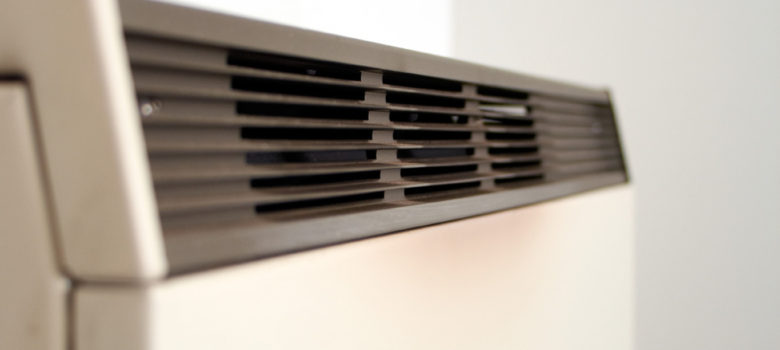



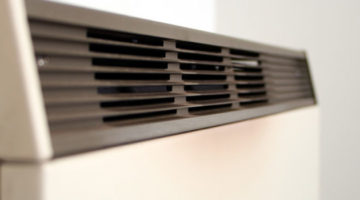
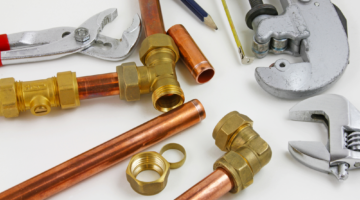
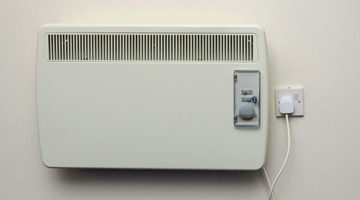
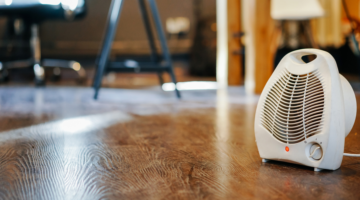





I have a storage heater in my bungalow with nothing but a power switch on the wall no dials or controls when turned on it does nothing no heat this is a new building any ideas ime a pensioner and can’t get answers from anyone . .?
First of all. Is it actually a storage heater or is it a convector ?
I am mainly on my own. Is it cheaper to just turn my economy 7 immersion heater which is a large tank That comes on automatically normally overnight, on for just 2 hours from say 6am to 8 am or to turn the top small tank which I,presume would,still be using economy 7 electricity on for 2 hours..
many thanks Wendy
I am mainly on my own. Is it cheaper to just turn my economy 7 immersion heater which is a large tank on for just 2 hours from say 6am to 8 am or to turn the top small tank which I,presume would,still be using economy 7 electricity on for 2 hours..
Mr. Johnson. check your fuse box and ascertain that the fuses are all pushed in. At the same time look at the meter face, it will show a high read out and a low read out dial if not then there is no Economy seven ( which would be unusual in a new build ). To test if the storage unit is “on” Switch everything off and check the meter, then switch only the storage on, the meter will now be using units more quickly. If this fails then the storage is most likely not connected or faulty. call an electrician. good luck !.
Hiya mr Johnson,
I have storage heaters in my flat and I switch them on before I go to bed and then turn the switch off when I get up! It should be giving you heat all day once its stored over night!?
I have 2 that have a control on and 2 that just set at a certain temp!
Just make sure you are turning them off in the morning otherwise you will be using a lot of money keeping them running all day every day!
Hope this helps
Xx
The storage heaters SHOULD be wired into a separate supply that only comes on during the off-peak pricing hours. The consumer fuse unit should make it obvious. Therefore, you do not need to switch them on and off – they cannot use peak price electricity as they are not supplied with power at other times. However, some people have incorrectly wired them in to the normal supply – not the right thing to do!
Good reply Andrew currie most people don’t realise they need separate supply like economy 7 to get cheaper electric
Thanks for sharing Lucy, really useful help!
Storage heaters do not use any electricity during the day!!! they come on for 7 hours over night. The heat is controlled by the output switch. One thing you must remember is to turn the output switch to nought 0 before you go to bed as this closes the vents as this keeps the heat in. If left open it does not store the heat.
When and more inportantly ‘how’ or even who turns on the power for charging night storage heaters and can we control it?
Is the power delivered constantly through the night or is there some sort of power/thermostat switching on/off?
I have just moved into a new property with 2 storage heaters. I have spoke to edf today and they have told me that me E& night tariff is from 10:30pm-12:30am the from 2:30am- 7am. My question is please. How do i know when my storage heater is storing heat and that it is in the Night tariff times.
My stotage heater only has the input and output knobs and no other dials.
I someone can help me with this please.
It is very useful to have at least one of your storage heater switches fitted with a light. You can then tell at what time the off-peak power comes on and off (the switch is left on normally)
Carlo,
Your storage heaters should be on a separate circuit that will only work during those night tariff times. Usually there will be a couple of switches near the heater – one will be for day and one for night. But every unit is slightly different, so it might be worth speaking to the manufacturer.
i have these all the way though my flat i m using so much on my electric because i dont understand them can someone please help me 30 pound to 50 pound i a week i am using in a weeks
I do not understand my storage heaters can you explain how to use them simply please
Fundamental to storage heaters is the Economy 7 tariff that goes with them. With Economy 7, you get two rates for electricity – 7 hours of cheaper electricity during the night (when demand in the grid is low) and then a more expensive rate during the day.
Under a normal electricity tariff, each unit of electricity is approximately 11 pence. The cheap rate of the economy 7 tariff is approximately 6 pence, while the expensive rate is 16 pence.
So basically a storage heater ‘charges’ during the time the electricity is cheap. Storage heater contain bricks within them. These are enclosed by an insulation jacket, meaning that when the bricks are heated, they retain the heat. When you want the heat, the insulation jacket is opened allowing the heat to escape, helping to heat the room.
The issue with older storage heaters (aside from their size), is that the insulation jackets don’t tend to be very good, so they leak this stored heat. By the time you want the storage heater to actually heat your home, the bricks are cold! Therefore people tend to put the boost on to get the heat, but the problem is that this requires electricity and it is at the expensive rate. This is the reason why people tend to look to replace them as they get old!
Anyway hope that explains a little bit more about how the storage heaters work!
Putting on the ‘boost’ (output knob) does not switch storage heaters on and use electricity at peak rate. It simply opens a flap that allows air to move through the core bricks, allowing more heat into the room. The next night, more off-peak electricity will then be used to recharge the heat in the bricks.
If the ‘boost’ is a switch with a light, then you are switching on a convector heater for instant heat (typically a 1.5 to 2 kw element) It should be obvious because there will be two cables – one from a switched connection plate for the storage part and another from a normal socket on the ring main for the convector.
If I do my laundry through the night is it on economy 7
Hi Wendy. It depends entirely on your electricity tariff – if you are on Economy 7, it means you have access to off-peak electricity for 7 hours during the night, so it should be a bit cheaper to run your washing machine then! If, however, you are on a standard tariff, it will be no cheaper to do your washing overnight than in the daytime.
I have dimplex quantum storage heater which has an lcd display to set on and off times but has no input or output dial so I have set on time 12 till 7 im guessing when it’s on is when it uses electricity. I’m so confused as there is no input or output dial.
The time that economy 7 comes on depends on your energy supplier and the meter that is fitted. I checked with my energy supplier, and was told 12 midnight to 7 am in my case.
Your energy supplier might not give you the correct hours if you are on an unusual split time tariff eg in Merseyside and north Wales. The only way to know the hours for sure is to fit one wall switch with a neon light or watch when your meter off peak numbers start speeding up and slowing down.
Do I put input on highest number and out put on highest all day. then when I go to bed turn to ZERO on out put dial then turn it up when I get up in morning very complicated for me.
Turn output down to the lowest setting at bed time. Do not turn it up until as late as possible then slowly increase the output to get the last of the heat. Then put output to lowest as you go to bed again.
It is like tucking up the heat for later!
When you go to bed turn the output down to the lowest. This will keep as much heat in the heater for later in the day. Only turn the output up later in the day to get some warmth from the less hot left over heat. Then turn it down again when you go to bed.
Hope that helps.
I worried, I go to bed early and so turn the storage heater on to charge at 9.30pm. What worries me is will they take the dear electricity between 9.30pm and 12.30am when economy 7 starts?
I got the part about just charging the unit (INput on and output off) at night. but I want to know if the convection control switch can be left set at 20 C (for cold weather) and turned on all of the time, or just when you need a heat boost? I am used to a “Honeywell” thermostat for forced air (USA) so am clueless. Thanks so much.
My heaters are using over £10 per day which I am struggling with. Why is it so expensive and what can I do please?
Hi Sarah, the first thing to do is ensure that you are not charging the storage heaters during the day, as you will be paying for peak electricity. Next I recommend getting your energy supplier to check the meters are working correctly. Finally (and this is if funds allow) you might wish to install new storage heaters to ensure they retain their charge once you charge them at night.
Is it cheaper to do my laundry through the night on economy 7
My storage heaters come on at 10.30 to 7.30 am. They go off for a while in the middle of the night, but they are using dear rate electricity for the first 2 hours. There is no way on my heaters to control the charging as this is done automaticallyy from my meter. I dont want to get up at 12 at night tomturn them on, but my heating bills are too high. Anything I can do please?
Mine are the same so cost a fortune. phoned my supplier and evidently nothing can be done during Covid Being Pensioners with no central heating all seems rather soul destroying and money wasting
your heaters are controlled by your esb meter reading your clock needs to adjusted by the esb
whats an esb meter and how do I adjust?
Hey there I’m in this house for almost 8 months now and still have no idea what’s going on with the heating. It has the input and ouput dials, The switch with the light on it and also two power switches at the bottom. I want it to charge up at night how can I tell what the right tariff switch is. I have tried lots of ways and the heating only comes on every bluemoon.
Padraig, I don’t know how long ago you put your question. If you have two switches at the bottom, it sounds like you have a storage radiator with an additional convector heater. The storage part should be wired in to a supply that only comes on during the off-peak hours (typically about 1am to 8am but in some regions might be on a split period to avoid everyone in an area using lots of power at the same time) Your consumer unit will have a separate section of fuses for storage radiators. The convector part is plugged in to a normal socket & can be used at any time (at peak rate prices – again it depends on how the house is wired – sometimes any electricity used during the off-peak periods is at low rate, so you could do washing or cooking in the middle of the night to save money.) The wall switch with the light is a way of knowing when the off-peak hours are. Leave it switched on and observe when power is supplied because the light comes on. If the light is on at any time, the heater is not wired in to an off-peak supply and will cost a lot to run. It really depends on how well insulated your home is; good insulation means on- demand space heating is best (convectors, fan heaters) and poor insulation might benefit from storage heating that is kept at a low background level to put heat into the structure.
Hi, i got my electricity supplier to come out and set my electricity so as my heaters only start heating at night, loads cheaper and the rooms are warm when i get up, if i want more heat in the evening i just turn the output up a little.
Hello! Sounds like you have storage heaters? If so, you should definitely be on Economy 7 – no doubt about it. This will allow you to charge the heaters at night at a cheap rate, and use the heating the next day.
My storage heater
After charging, if you do not use the heat, how long with the charged heat last? For example, if I do not use all the charged heat on Friday, can I turn it off and it will be available to use on Sunday?
My energy supplier won’t tell me when my lower-rate hours are. They’ve said that they buy the energy in from the grid and can therefore only tell me that i’ll have 7 hours on the lower rate between 10pm and 8:30am.
How do I know when my lower rate hours are?
My Dimplex storage heater is stuck on 4 or even higher. Eill this meanthe electricity is a lot dearer than a 1 2 or3 setti g? The heater is only 3 years’s old. Help please
When you go to bed turn the output down to the lowest. This will keep as much heat in the heater for later in the day. Only turn the output up later in the day to get some warmth from the less hot left over heat. Then turn it down again when you go to bed.
Hope that helps.
Hi there,
You best bet is to get in touch with the system manufacturer. All storage heaters have slightly different controls, it may be that the manufacturer can help you figure out how best to tackle this issue!
Please can you help me set my heating right my heaters have a automatic input and a boost
Why do manufacturers of storage heaters not make them set output to lowest when they start heating? That would be the most important way of making them far less wasteful! It is such a shame that forgetting to put the output to the lowest at bed time and the heat will not last the next day!
Even older storage heaters (slimline, not very old!) have a mechanism to prevent them losing too much heat when they are approaching a full charge. An automatic linkage stops the output flap from opening when there is a lot of heat stored, then as the heat is lost, the flap begins to open. The output knob gives extra control to the householder to reduce or increase the effect of the automated flap. Adjustments can also be made inside the casing by someone competent.
Hi there, I don’t know how old this thread is. Hoping someone out there will pick this up.
I’m going insane trying to figure out my heaters. I have just received a £1,085 electric bill for 4 months! I was put onto the economy 7 tariff but the EDF sales rep didn’t explain to me how it works regarding the cheap and expensive rates, I didn’t have a clue. My three heaters aren’t making life easier now I know about the tariff either. Nobody so far has been able to figure my heaters out. They have a round numbered dial from 1 to 6 and a circular timer dial with a 24 hour numbered clock face, and little tiny bits around the circumference that you can push in or out. They also have a switch one with one dot and one with two dots on it as well as another switch with manual or timer options. The heaters are all connected to the general plug sockets. Thank you in advance! Hope what I wrote was understandable.
Natalie, I didn’t finish my reply. The switches with one or two dots are two settings, low or high. The 1-6 will be a thermostat and the manual switch simply overrides any pin settings on the 24 hour dial, switching the heater permanently on. Even if switched permanently on, the thermostat MAY switch power off if it detects a warm enough room but don’t be surprised if this never happens in a cold house with just these small convectors.
Natalie, I don’t know how long ago you wrote, but you haven’t got storage heaters but ordinary convectors. Plugged to normal sockets you are using peak time electricity. You would only use these when occupying a room and never leave on overnight. Maybe your home is also old and poorly insulated..
I have storage heaters they are modern the make is gabarron. they have 2 switches one on the wall and one on the heater. i leave it on by the wall all the time. i have not used them yet does this mean they are charging by just being on at mains.
I have economy 7 what can I use to heat my flat cheaper it’s rented
moved into a new flat and I have set my output to evening boost – no idea what time that is but hoping it’s overnight so I am charged the off peak rate. The input is at 4, are these the right settings? I come home from work about 18:00 and the flat isn’t warm, no energy boost from stored heat. Help please? Worried about the bill cost in my new home and wasting heat when I’m not home. Any advice would be appreciated.